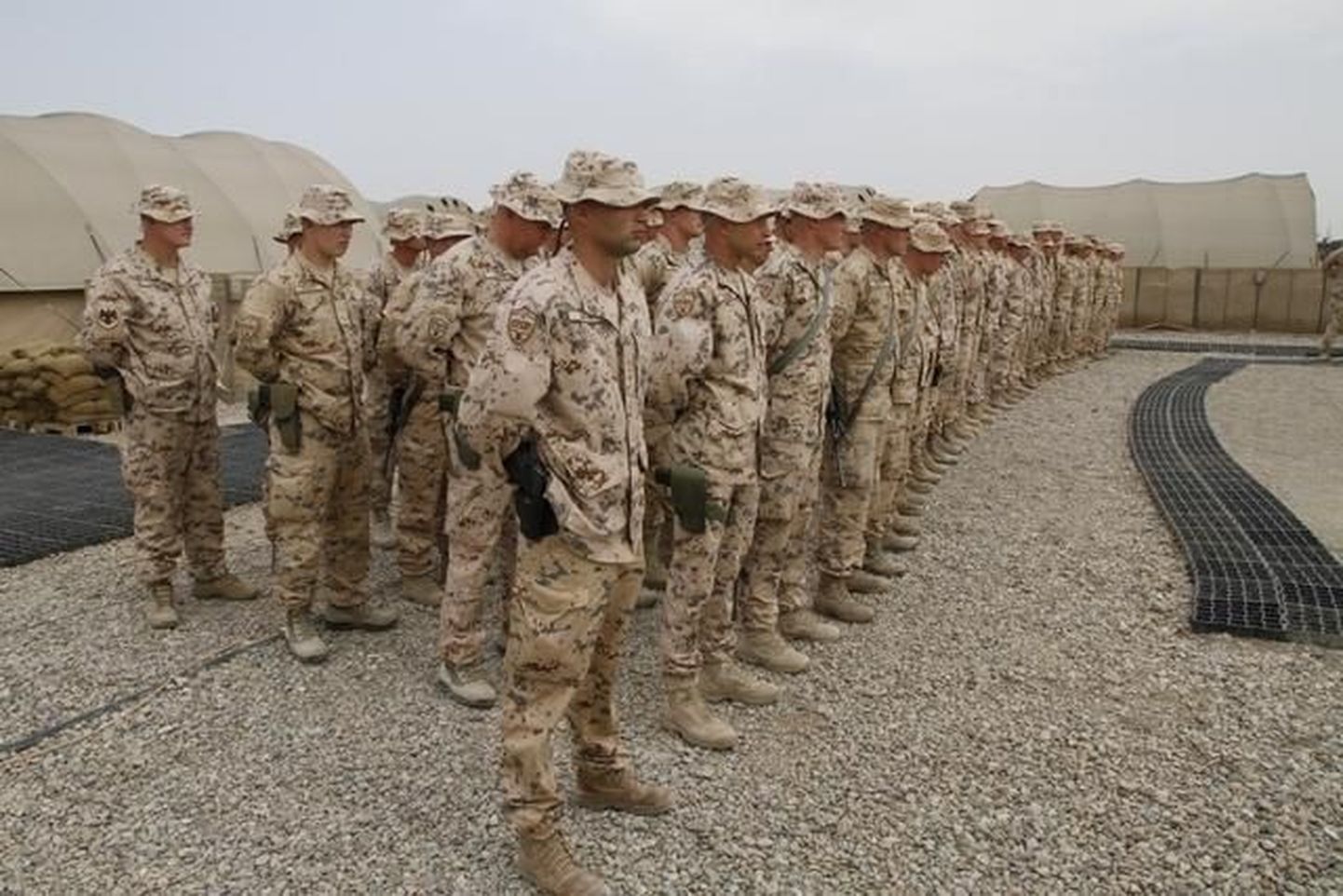
This week ten years passed since the deployment of the first Estonian unit on the NATO-led mission in Afghanistan, and during that time nine Estonian personnel have been killed and more than 90 injured on the mission.

This week ten years passed since the deployment of the first Estonian unit on the NATO-led mission in Afghanistan, and during that time nine Estonian personnel have been killed and more than 90 injured on the mission.
The first Estonian unit was a six-strong explosive ordnance disposal team, EOD-3, that started its service in mid-March 2003. The EOD unit served around Kabul and in northern Afghanistan until 2007.
Estonian staff officers have been serving in Afghanistan since 2004. Besides, military airport apron service teams from Estonia served at the Kabul airport from 2005-2009 and in 2005-2006 the country sent to Afghanistan two teams of military observers.
An Estonian close protection team looked after the security of the Estonian charge d'affaires based in Kabul from 2006-2013.
When the operation of the International Security Assistance Force (ISAF) expanded to southern Afghanistan the first Estonian infantry unit, ESTCOY-2, and a national support element, NSE-1, started to serve alongside British forces there. From the initial 37-strong ESTCOY-2 and six-strong NSE-1 Estonian presence evolved into a full-sized company in 2008. By the end of that year there were close to 150 Estonian personnel serving in Afghanistan.
Under the current parliamentary mandate the maximum number of troops that the country can deploy in Afghanistan is 170.
In 2009, during the Afghan elections, Estonia provided a second unit, 134-strong ESTCOY-E, to serve with US Marines in providing security in the polls. At that time the size of the Estonian contingent surged to 289.
The Estonian units in southern Afghanistan have operated out of Camp Bastion (ESTCOY-3, ESTCOY-4 and ESTCOY-15), Lashkar Gah (ESTCOY-7), Now Zad (ESTCOY-5 and ESTCOY-6), Wahid (from ESTCOY-9 to ESTCOY-14) and Pimon (ESTCOY-14 and ESTCOY-15).
At present Estonia has in Afghanistan the infantry company ESTCOY-15, the national support element NSE-14, and from 2012 onwards a special unit in the composition of US special forces. Of hardware the Estonian contingent has at its disposal 13 units of Sisu XA-188 armored personnel carriers (APCs), 14 units of Sisu XA-180 APCs, eight MRAP armored fighting vehicles borrowed from the United States, ten trucks and eight other vehicles.
Estonia is scheduled to deploy two more maneuver units in Afghanistan, the last of which will end its mission in 2014.
During the ten years nine Estonian soldiers have been killed and 92 injured in combat in Afghanistan. Of the injured soldiers 32 have been declared permanently incapable of work. In addition to the personnel injured in combat, 59 members of the defense forces have sustained injuries in Afghanistan.
During the Soviet invasion that lasted from 1979 to 1989, 36 men from Estonia, including 16 ethnic Estonians, lost their lives in Afghanistan.
The first Estonian in that conflict was killed already on the first day of the invasion, on the evening of Dec. 25, 1979, when a Soviet IL-76 transport plane about to land at Kabul airport crashed into a mountain killing seven crew members, 37 airborne troops and nine personnel from other units.
According to research by historian Küllo Arjakas, the last Estonian victim of that conflict died in a hospital in the Uzbek capital Tashkent on July 2, 1988, 228 days before the Soviet troops were withdrawn, of injuries sustained in a mortar attack at Kandahar airfield on May 18 the same year.
The highest ranking Estonian killed in the conflict was Maj. Olev Jaasson, deputy commander of a Soviet fighter unit, whose jet was shot down near the border between Pakistan and Afghanistan on Oct. 24, 1982.